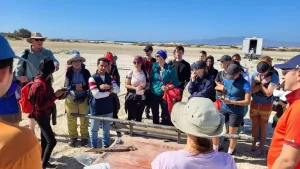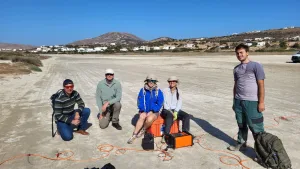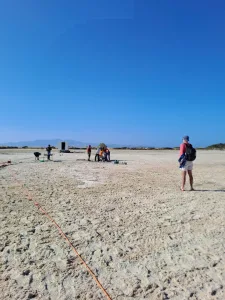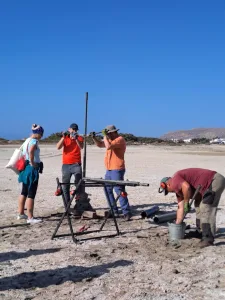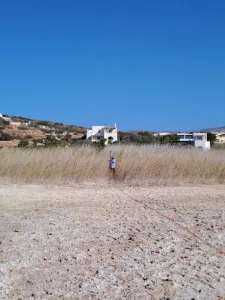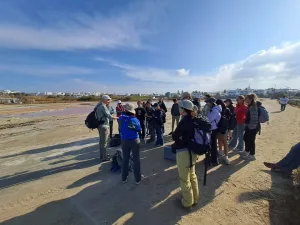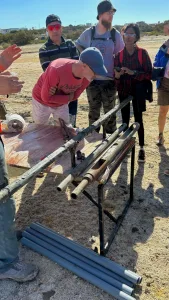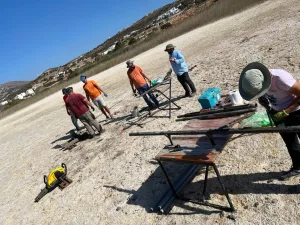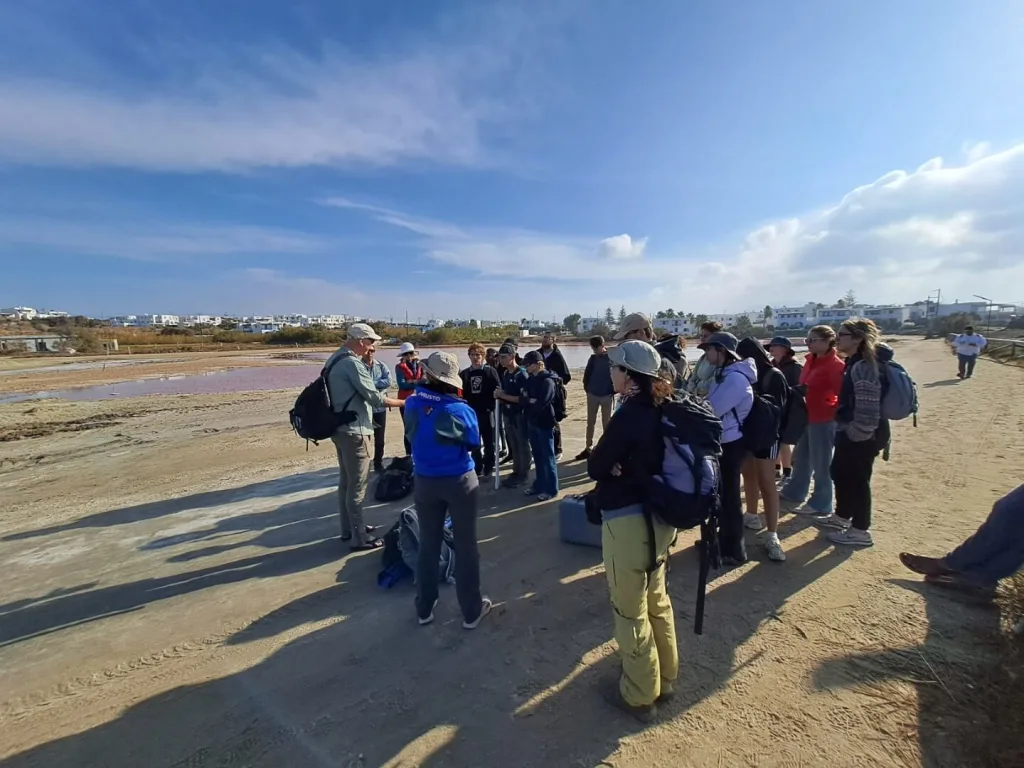In October 2024, a joint field campaign was carried out along the coastal zone of Naxos Island, in the Cyclades, Greece — a collaborative effort between the National and Kapodistrian University of Athens (NKUA) and the University of Bucharest (UB) teams.
The focus of the research was the Glyfada site, a stunning coastal landscape that features an impressive combination of beachrocks, sandy beaches, coastal dunes, and a lagoon system. This diverse setting offers a unique opportunity to study how coastlines evolve under the combined influence of natural processes and long-term climate change.
Through a combination of sediment coring, GNSS topographic surveys, and Electrical Resistivity Tomography (ERT), the team is working to reconstruct the paleogeography and paleoenvironmental changes that have shaped this area during the late Holocene. These methods allow researchers to look beneath the surface and piece together how sea-level changes, sediment dynamics, and climatic fluctuations have influenced the coastal landscape over thousands of years.
This field campaign was also closely linked to the BIP CIVIS program, titled “Climate Change and Landscape Evolution in the Mediterranean Context”, which welcomed additional collaboration from colleagues at Aix-Marseille University (AMU). This international partnership provided an excellent platform for knowledge exchange, training, and advancing research on how Mediterranean coastlines respond to environmental change.
The work on Naxos not only contributes to the broader goals of the TRACE project but also enhances our understanding of coastal resilience in the face of both past and future climate challenges.
